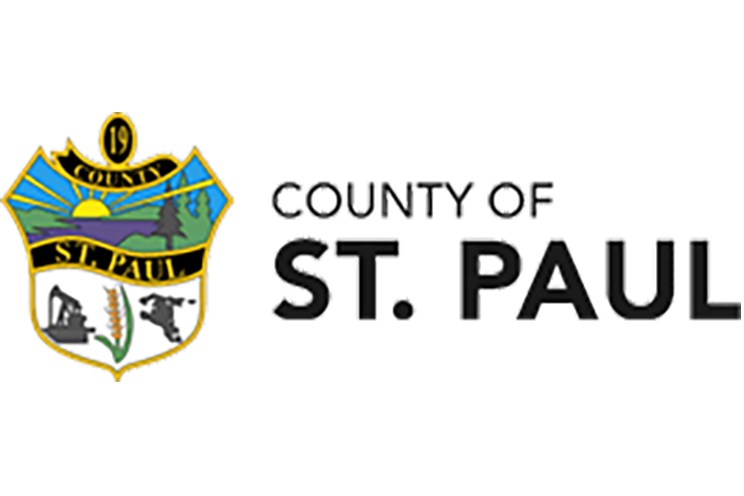ST. PAUL – Looking back on 2023, the County of St. Paul focused more on service maintenance rather capital projects and infrastructure, according to the reeve.
Reeve Glen Ockerman says there was less road construction, but more infrastructure and road maintenance done, for example.
He explains the decision was rooted mostly by the economy. With the current state of economy in the province, from the rising costs of fuel, carbon tax, and inflation, he says the “taxpayers simply cannot afford it.”
With prices from all areas going up, the County is trying to mitigate that, says Ockerman.
“I’m a realist,” he adds. “You see a lot of people just trying to survive the month, the week, the year. While I’m not saying the County’s in that shape... we do need to reflect our taxpayers when making decisions... because it’s costing more to live.”
That means trying to maintain the quality of services the County provides while trying to keep costs down as much as possible, despite other costs going up.
“We’re just trying to stay functional.”
Tax Increases
Despite the County’s efforts to mitigate spending, the County anticipates a five per cent tax increase for ratepayers in 2024.
“It’s hard to always say there’s going to be an increase. But we have the responsibility of providing services and being able to provide those services is costing more,” he says. “And we only have one place to get those dollars from... the ratepayers.”
Ockerman says he, as well as council, does not like to resort to a tax increase.
“But I think it’s very justifiable,” he says. “We have to keep providing services... so we thought maybe a little tax increase would be better... to still provide those services.”
Fuel
Among the factors driving up the costs of providing municipal services is fuel, according to Ockerman, explaining practically everything the County does requires fuel. “We’re not locked in one place. We travel.”
If the County goes out to fix infrastructure, for example, such as fixing culverts or roads, staff must travel miles in all directions. “Or when we haul gravel... even to mow grass, we have to travel 40 or 45 miles. Everything we do, we’re in transportation mode,” he says.
Carbon Tax
Related to fuel is the carbon tax. He says due to the County’s use of fuel, the municipality is also paying more in carbon tax. In 2022, the County paid $244,295 in carbon tax, which was an increase of 66 per cent from 2020.
According to information from the County, in 2022, the County’s fleet equipment emitted 4,639 tonnes of greenhouse gas, making up 85 per cent of the County’s total GHG emissions. The remaining 11 per cent is from natural gas and electricity used in the County’s infrastructure.
Numbers are still not available on how much the County paid for in 2023, but the County projects they will pay more as the federal carbon tax increases every April 1 of each year.
In 2023, the carbon tax increased from $50 per tonne of GHG to $65, according to the Canada Revenue Agency. On April 1, 2024, this will increase to $80 a tonne.
By 2030, carbon tax will be $170 per tonne of GHG. The County projects they will pay over $800,000 in carbon tax by 2030.
Equipment
Parts and equipment to get the work done have also increased substantially. According to Ockerman, costs have increased by 40 to 50 per cent compared to the previous years for parts and equipment.
CAO Sheila Kitz agreed, noting that in addition to the County’s fleet equipment, they also help maintain fire trucks. And prices for fire trucks have gone up by nearly 46 per cent.
A comparison
Ockerman says the current economy is unlike the economy a decade ago.
Back then, “the money was flowing and the economy was doing good,” he says. “So, the municipality was doing fairly good,” and there were “lucrative” grants then.
“There was support for fire halls,” for example. “And there were dollars available.”
“We built this County lots... we did lots of capital projects,” he says. But things have changed. Currently, there are no large capital projects in the works.
“We don’t have the dollars to do it,” he says. “I don’t think... the ratepayers can afford to pay much more taxes.”
Looking ahead
Ockerman says the focus for 2024 will likely remain the same as 2023 - to maintain the same quality of services the County currently provides.
Kitz says the County still does work to try to boost the economy in the St. Paul region through the STEP (St. Paul Elk Point) Economic Development Alliance. “We’re doing lots to promote growth in the region as a whole and make it a better place to attract people,” she says.
And it’s not just about the residents, but also a shift toward bringing people to the region through tourism.
“Tourism is going to be really big in the Northeast Alberta,” says Kitz. The County and its partners are trying to “position some of the work we’ve been doing for the last few years,” to ensure the groundwork is laid out so the region is ready to apply for grants as they become available.
“If we can bring some tourism dollars... everything helps,” says Kitz.
*Editor’s note: CAO Sheila Kitz has now retured as CAO of the County of St. Paul after 14 years at the helm of the municipality. She is now contracting her services for a portion of January.



